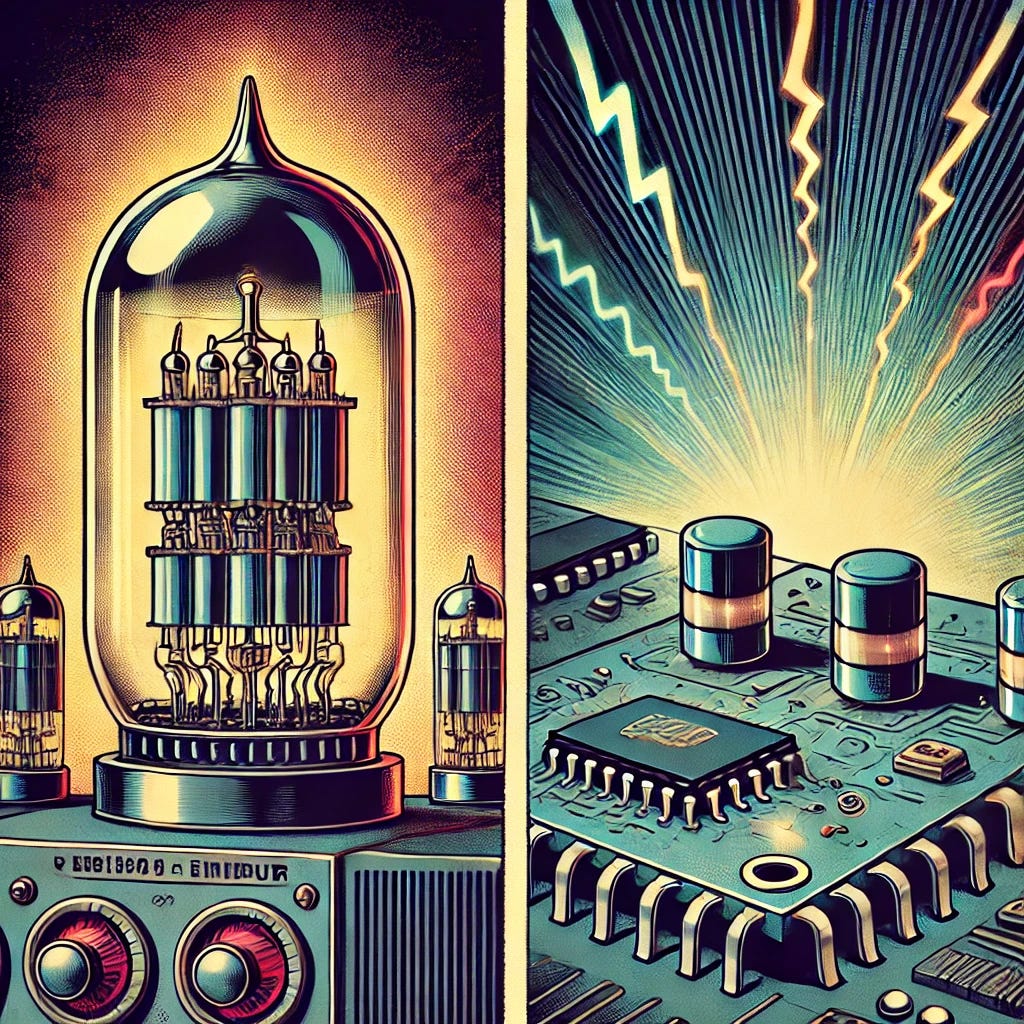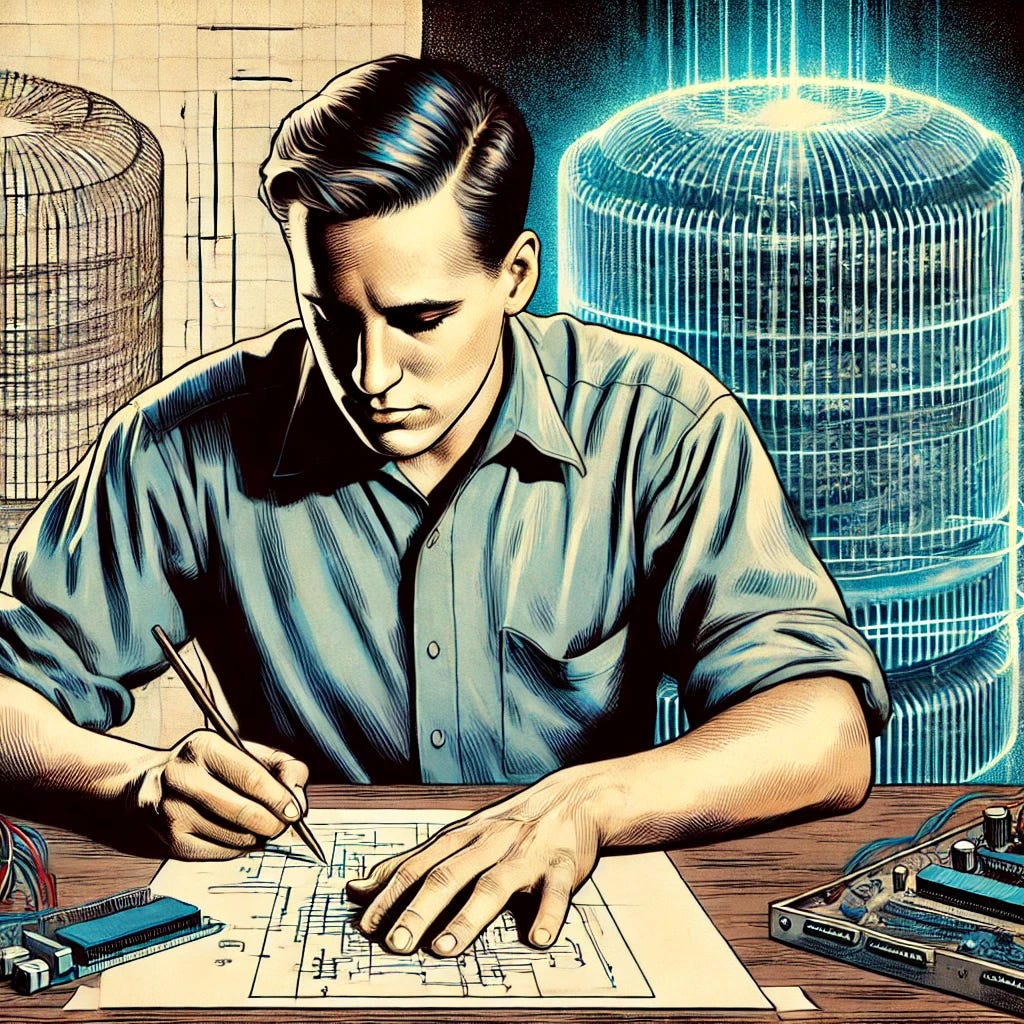Superman. Superpower. Supersize.
Throw the word “super” in front of just about any normal word, and you have something in a class all by itself, quite apart from other things in that group.
Supercomputer is one of these magical words. Typical computers are all around, often taken for granted since they’re small and take up very little energy. They blend into the background, and we almost ignore them.
You can’t really ignore something that begins with super. Supercomputers can be massive, and they can take up more energy than your entire house uses, although that situation is rapidly evolving. Suffice it to say: they’re notably different than the typical computers you probably think of.
While they’re not necessarily behemoths that fill entire rooms, supercomputers certainly started out that way. Remember ENIAC?
The United States wanted every edge it could get in the war, and so two electrical engineers named John Mauchly and J. Presper Eckert were tapped at the University of Pennsylvania to create something new to the world: a computer that wasn’t mechanical, that didn’t rely on gears turning and physical components moving around in order to give an answer.
This was a leap upward, akin to the shift from pigeons carrying information to the telegraph. While mechanical computers were capable of 3 or 10 calculations per second, ENIAC could do 5000.
Integrating thousands of vacuum tubes into a massive 1800 square foot machine, considerably bigger than my house, was no small feat. Nothing like this had ever been attempted.
Fortunately, after a relentless candle-burning sprint, ENIAC was completed. Unfortunately, the war was over by then.
ENIAC was pretty bad ass, but there was still a very, very long way to go. 5000 calculations per second was mind-blowing for its time, but your smartphone might do around a trillion of these same calculations in a second today.
A necessary condition was the leap from vacuum tubes to integrated circuits.
At the heart of this relentless innovation was a deep understanding of materials science, physics, and manufacturing processes, enabling engineers to continually shrink transistor size while packing more of them on a single silicon chip. This race towards smaller, faster, and cheaper transistors laid the foundation for the digital revolution that we are a part of today.
Unlike vacuum tubes, transistors on chips could be made smaller and smaller, and they produced far less heat than the big, hot tubes (get your mind out of the gutter). That’s why we have the devices we have today, much smaller and vastly more portable than anything from this early era.
Still, there was a desire to test the boundaries with what a bigger machine could do, especially given that you could make something really powerful and fast with these integrated circuits taking up a fraction of the space of the tubes.
Enter Seymour Cray.
Building the fastest and most powerful computer in the world seemed to be Cray’s mission in life. He was a talented engineer who seemed to run at a higher energy level than his colleagues, sketching out his ideas on butcher paper so that he could quickly grab an idea and put it to paper.
After working with a few leading companies and designing machines for them, Cray struck out to form his own company, dedicated to producing supercomputers. Cray Research was founded in 1972 at a time when there were few (or maybe no) potential customers. Suffice it to say, this was a bold play.
Cray Research’s small team built the world’s first true supercomputer in 1976, the same year the Apple I was released. While Woz was a wiz with his chips, Cray had an entire team of meticulously focused, hyper-talented engineers all rowing in the same direction.
While ENIAC’s speed was measured in calculations per second (5000), the Cray-1 supercomputer was measured in megaflops—millions of FLoating Operations Per Second. It’s hard to put into context just how incredible this was for 1976, but that Apple I cost $666.66, whereas the Cray-1 was a little under $9 million.
It’s hard to even make an apples-to-Apple comparison here, because the Cray used a completely different (and new) type of architecture. Apple I could do one calculation at a time, but Cray-1 was able to process lots of different things at once. This parallel processing meant something like 100 times as many calculations to take place at a time with the Cray.
That was something, but Cray and his team didn’t stop there. By installing an innovative cooling system (you hear an awful lot about those today), the Cray-1 was able to run at a much faster clock speed than the Apple I (or any other computer that was around at the time). This meant that not only were there many calculations going on all at once, but that those calculations were much, much faster.
Combine all of this with incredible architecture and a vast memory, and you had a computer in a class all by itself.
If the Apple I was a bicycle for the mind, the Cray-1 was more like a rocket-propelled missile. What I mean is that the raw power of the Cray was just so vast that it makes it look as though the Apple is just sitting still, but… well, it’s a very specific tool with a very specific use case. While missiles are great for attacking an enemy, they’re not very good for picking up a few groceries or going for a scenic ride.
Today’s supercomputers are still used for very narrow scientific and mathematical purposes—stuff that regular computers just can’t do, like weather predictions or drug discovery—but they are much more diverse. The fastest supercomputer today is called the Frontier system, and it’s kept at the Oak Ridge National Laboratory, which my grandfather helped build.
The Frontier is millions of times faster than the Cray-1. You have to zoom out a bit to grasp just how staggering that pace of innovation really is: during my own lifetime, all of this has happened. If things look weird out there in the world, there’s a pretty good chance this pace is at least part of the reason.








Super doesn't necessarily mean better. Ever since Friedrich Nietzsche originated the concept of the Superman (translated from the original German Ubermensch) in the 19th century, we have regularly seen the prefix used both positively and negatively in fact and fiction.
The super-computer of fiction I most know of is Colossus, the subject of a trio of SF novels by D.F. Jones. It conquers the world and has to be overthrown...
I see your big hot tubes and raise you a heat sink